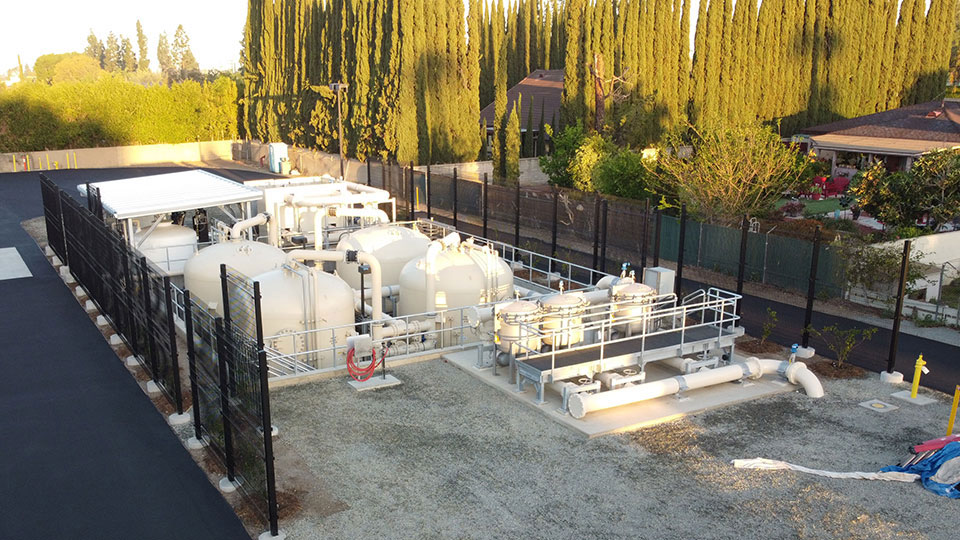Comprehensive PFAS Management Strategies for Contaminated Sites
Comprehensive PFAS Management Strategies for Contaminated Sites
Blog Article
Ingenious PFAS Therapy Solutions for Safer Water
The enhancing frequency of PFAS contamination in water products necessitates an important examination of cutting-edge therapy remedies. Furthermore, emerging bioremediation methods use an even more lasting approach to dealing with PFAS challenges. pfas management.
Introduction of PFAS Contamination
PFAS contamination has actually become a substantial ecological and public wellness issue. Per- and polyfluoroalkyl compounds (PFAS) are a group of synthetic chemicals understood for their persistence in the setting and human body, leading them to be commonly referred to as "forever chemicals." These substances have actually been commonly made use of in different markets, consisting of firefighting foams, water-repellent materials, and food packaging, mostly because of their water- and grease-resistant residential or commercial properties.
The widespread use of PFAS has actually caused their discovery in soil, water products, and also in the blood of humans and pets. Studies have connected PFAS exposure to countless wellness concerns, consisting of developing impacts in infants, immune system disorder, and different forms of cancer cells. In addition, the environmental persistence of these substances complicates their deterioration and removal, elevating worries regarding long-term eco-friendly effects.
Regulatory bodies are increasingly implementing stringent standards to keep track of and reduce PFAS degrees in drinking water and various other environmental tools. As understanding of PFAS contamination grows, it has become vital for areas and industries to seek effective therapy solutions to minimize exposure and protect public wellness.
Advanced Filtration Technologies
As the urgency to address PFAS contamination increases, progressed filtration modern technologies have actually emerged as a critical part in the remediation efforts aimed at eliminating these persistent chemicals from water resources. These innovations utilize sophisticated devices to effectively target and catch PFAS substances, which are notoriously resistant to standard treatment techniques.
Among the most appealing approaches is making use of granular turned on carbon (GAC), which adsorbs PFAS particles due to its high area and permeable structure. This technique has actually been commonly applied in both community and commercial setups, showing significant reductions in PFAS concentrations. Furthermore, ion exchange materials have actually obtained traction, particularly created to uniquely bind PFAS ions from water, hence facilitating their removal.
Membrane filtration innovations, such as reverse osmosis and nanofiltration, additionally reveal efficiency in PFAS removal by physically separating pollutants from water - pfas management. These systems can attain high degrees of pureness, making them ideal for alcohol consumption water applications
Chemical Therapy Innovations
Various chemical treatment developments are being checked out to successfully attend to PFAS contamination in water materials. One appealing technique includes making use of advanced oxidation processes (AOPs), which utilize effective oxidants such as ozone, hydrogen peroxide, or chlorine dioxide combined with UV light to damage down PFAS substances right into much less dangerous compounds. This technique has actually demonstrated efficacy in laboratory settings, revealing possible for scalability in real-world applications.
One more ingenious method is the advancement of ion-exchange resins particularly created to target PFAS. These resins can selectively adsorb PFAS compounds from water, allowing click this site for their removal throughout therapy processes. Recent developments have actually boosted the efficiency and ability of these resins, making them a beneficial option for water therapy facilities.
Additionally, scientists are examining the use of chemical agents like persulfate and ferrous ions to boost the deterioration of PFAS in contaminated water. These agents can generate chain reaction that assist in the failure of consistent PFAS compounds.
Arising Bioremediation Techniques
Current innovations in chemical treatment technologies have paved the method for exploring bioremediation methods like it as a practical choice for attending to PFAS contamination. Bioremediation harnesses the all-natural metabolic processes of bacteria to degrade or change pollutants, making it an enticing technique for taking on persistent impurities like PFAS.
Emerging methods in bioremediation consist of making use of genetically crafted microorganisms that can particularly target and break down PFAS substances. These microbial strains are being established for their boosted degradation abilities, increasing the effectiveness of the removal procedure. Additionally, researchers are investigating the capacity of plant-assisted bioremediation, where particular plant species may uptake and sequester PFAS from infected dirt and water.
Another appealing strategy is the application of bioaugmentation, which involves introducing helpful microorganisms into infected settings to boost the deterioration of PFAS. This technique can facilitate faster remediation timelines and enhance overall effectiveness.

Regulatory Frameworks and Criteria
An extensive regulatory structure is crucial for effectively managing PFAS contamination and making certain public health security. The enhancing acknowledgment of per- and polyfluoroalkyl substances (PFAS) as ecological contaminants has prompted numerous federal and state companies to establish requirements that regulate their visibility in water supplies. The United State Epa (EPA) has established health advisories and is functioning towards establishing enforceable limitations for PFAS in alcohol consumption water.
State-level laws vary dramatically, with some states taking on more stringent standards than those recommended by the EPA. These laws typically include optimum pollutant levels (MCLs) for specific PFAS substances, surveillance requirements, and reporting obligations for water energies. In addition, arising frameworks focus on the removal of infected sites, emphasizing the need for efficient treatment modern technologies.

Conclusion
In verdict, the advancement and application of ingenious PFAS therapy options are crucial for dealing with the prevalent concern of water contamination. Advanced filtration technologies, chemical treatments, and emerging bioremediation techniques jointly provide a multifaceted approach to efficiently minimize and deteriorate PFAS levels. As regulatory frameworks proceed to advance, integrating these modern technologies will certainly be necessary to protect public health and bring back the stability of contaminated water sources, inevitably adding to a cleaner and much safer atmosphere.
Report this page